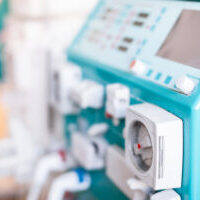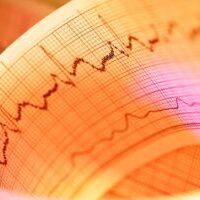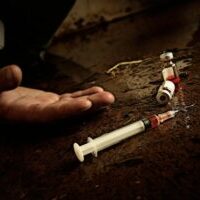HOME CARE MONITORING PROVIDES CRITICAL VALUE
Designed for post-acute care, primary care, and long-term care, our Home Care Monitoring (HCM) solution serves a variety of healthcare organizations, hospital systems, non-medical home care organizations, and assisted living communities.
Home Care Monitoring helps providers manage large remote patient populations through the use of evidence-based clinical protocols, and pro-actively intervene through video visits, before patient’s conditions become more serious, preventing re-admissions and unnecessary emergency department visits.
Using our web interface and native Android application, long-term patient monitoring is possible without the high cost of in-person oversight and is a recommended strategy to keep readmission rates low in the first 30-90 days following discharge.
The HCM is ideal for patients who need oversight after discharge from the hospital to home or to another care facility. ITeT's HCM Kit includes a tablet with integrated medical devices is used to monitor their vitals and status over time.
ITeT's HCM Kit is designed to make it easy for patients to collect their own daily biometrics using reliable wireless and wired monitoring devices (blood pressure monitor, pulse oximeter, weight scale, thermometer, and glucose monitoring devices) automatically or manually (in the absence of connected devices), and answer their individual disease-specific assessment questions.
HCM also facilitates patient self-management of conditions and provides them with quick access to important interactive health resources and disease-specific educational content.
For patients with chronic conditions, such as heart failure (HF), diabetes (DM) and chronic obstructive pulmonary disease (COPD), our Disease Management programs (DMP) aim to help patients maintain independence and a healthier lifestyle using our Home Care Monitoring solution.
Evidence-based algorithms and a customizable platform by disease state and population help you support the individual needs of each of your patients. Providers can assign patients specific disease management protocols and interventions tailored to their condition or acuity level.
Additionally, the HCM includes a series of preprogrammed survey questionnaires based on branching logic which is able to trigger follow-up responses. The pre-built DMP's come with relevant educational content to promote self-dependency.
Patient-reported responses and connected biometrics measurements are automatically transmitted to the cloud server and are in near real-time available to the provider. By combining objective data and subjective responses, the clinical application helps analyzes and prioritize populations that enable providers to identify and proactively provide care to the patients at the highest risk.
The system allows providers to print reports, view pie and trend graphs for compliance, and review health data for every single patient. When the vitals cross a physician-prescribed threshold value, our solution alerts the care provider, enabling them to intervene before the patient’s condition worsens.
In the case of alerts and in the event that an in-person encounter is unnecessary or impossible, a quick live video appointment can be a good substitution. In addition to the patient, the provider can invite additional participants to the video visit as needed.
WHY UTILIZE A HOME CARE MONITORING PROGRAM
Better Patient Outcomes at Lower Costs
Telehealth-enabled clinical programs contribute to reduced hospital admissions and readmissions, reduced length of hospital stay, fewer emergency department visits, reduced mortality and lower costs, and help prevent and/or limit illness severity, thereby contributing to improved health outcomes.
Prioritized Patients and Interventions
Patient-reported responses and connected measurements are automatically transmitted to the care team via wired or wireless connected devices. By combining objective data and subjective responses, our clinical platform helps prioritize populations and enables providers to identify and proactively provide care to the patients at the highest risk.
Historical Monitoring Data for a Comprehensive Picture
Scalable, Tailored Programs
Manage populations through the use of evidence-based clinical protocols and telehealth teams. We support multiple delivery channels for patients across the acuity spectrum – from equipping the patient with a tablet and connected devices to supporting self-care via web-based tools that allow for patient reporting.
A Personalized, Engaging Patient Experience
Have patients take a more active role in managing their personal health. Connected devices and applications empower patients to track and report their weight, vital signs and overall condition.
Configurable Patient Views Based on Disease Protocols
HOME CARE MONITORING PROTOCOLS
Remote monitoring is also extremely useful for the treatment of a number of chronic conditions. It can be used by diabetics, for example, to track their glucose levels and send the data to their doctor. Elderly patients at home or in assisted living facilities can be conveniently and inexpensively monitored.
Our DMPs include such programs as:
ITet's evidence-based Disease Management Programs (DMPs) aim to provide better care while reducing the costs of caring for the chronically ill persons with specific chronic conditions, and service use and costs associated with avoidable complications, such as emergency room visits and hospitalizations.

Chronic Kidney Disease (CKD)

Chronic Obstructive Pulmonary Disease (COPD)

Diabetes Mellitus (DM)

Heart Failure (HF)

Hospice & Palliative Care

Hypertension (HTN)

Major Depressive Disorder (MDD)

Post Traumatic Stress Disorder (PTSD)

Substance Use DIsorder (SUD)

Tobacco Cessation (TC)

Weight Management (WM)

Comorbid and Trimorbid DMPs
